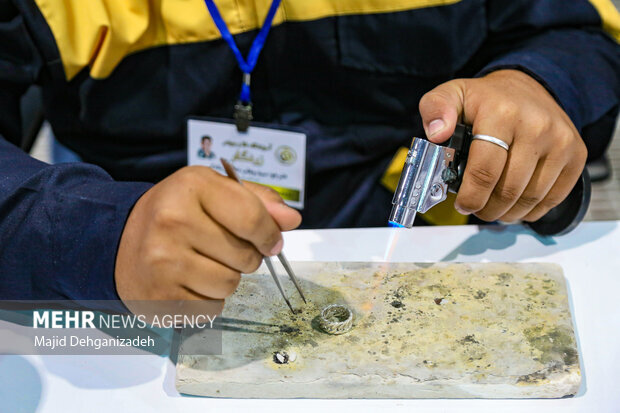Authenticity is key for foreign buyers of Persian handicrafts, exporter says

TEHRAN-- Foreign buyers are looking for the authenticity of handicrafts, not mass production, so work that has a soul is more valuable to them, a handicraft exporter in Yazd has said.
Majid Yavari told Mehr news agency that Yazd is a living museum of handicrafts; from the weaving of cloth to the hammer blows on gold.
This city still has the potential to become one of the handicraft export hubs in the region, provided that systematic planning and more serious branding are carried out, he said.
He also said that the most important fields active in Yazd include Termeh weaving, Darayee weaving, Ehrami weaving, Meybod pottery, Zilo weaving, Khatamkari, calligraphy, and metal arts.
“Each of these fields is not just a traditional art today, but also forms part of the province’s creative economy and is used in various fields. Termeh, as a symbol of Yazd, is currently high demand in addition to being used in the traditional clothing, interior design, the production of official gifts, and decorative products.”
He pointed out that Darayee weaving has also found a new place in the style design and interior decoration market due to its geometric designs and bright colors. He added that Meybod pottery, which was once used only for consumer dishes, has currently entered many homes of the younger generation in form of modern dining sets, minimal accessories, and decorative products.
“Zilu is still one of the cultural pillars of Yazd and is mostly used in mosques, religious spaces, cultural sites and even modern tourist complexes. On the other hand, Khatamkari, Qalamzani and wooden arts are also more known as exquisite products and organizational gifts, and many foreign institutions use these products as special gifts during official trips to Yazd.”
He emphasized that the global markets of Yazd handicrafts have witnessed a remarkable growth in recent years. “Termeh and Darayee have the highest number of customers in Europe, Canada, and the Persian Gulf region. Foreign buyers purchase these products mostly for home decor, hotel design, and even the fashion industry.”
According to him, Meybod pottery is one of the most fortunate fields, and Germany, the Netherlands, France, and Australia are its largest buyers. The calm colors and original patterns have made these products compatible with the tastes of Western customers, he added.
Due to its global registration, Zilou has also found significant customers in Arab countries, Turkey, Indonesia, and Malaysia, and is often purchased for religious, cultural, and artistic spaces.
In the field of Khatamkari and wooden arts, countries such as Qatar, Oman, China, Japan, and Singapore are also important customers, and these works are mostly used as official gifts and luxury decorative products.
This handicraft exporter, who has been active in the field of traditional goldsmithing for more than 25 years, believes that the market for traditional Yazd jewelry has reached a new stage in the last five years.
The combination of authenticity with modern design has made it more attractive to foreign customers than ever before. Traditional Yazd jewelry, which is mostly based on designs inspired by windcatchers, Qajar motifs, adobe architecture, and combinations of stones such as turquoise and agate, is currently offered in foreign galleries and exhibitions. According to Yavari, the largest foreign markets for Yazd jewelry have been formed in Germany, Italy, the United States, France, Australia, and the Persian Gulf countries. Customers in these markets are usually looking for work that is completely handmade, unique, and based on local identity, he said. “Foreign buyers are also looking for authenticity, not mass production. Work that has soul is more valuable to them.”
Pointing out that most handicraft workshops are still active in the historical texture of Yazd, Khan Bazaar, Zargarha Bazaar, Fahadan District, and Meybod workshops, he emphasized that a large part of the sales of handicrafts is currently done through online networks.
He continued that many young artists have combined small traditional workshops with modern sales methods, and this has led to Yazd products reaching foreign buyers directly.
This handicraft exporter considered the future of Yazd handicrafts to be bright, but conditional and stated that to transform Yazd into an international handicraft brand, issues such as standard packaging, continuous presence in global exhibitions, creation of joint brands of artists and support for exports must be seriously pursued.
He said that Yazd has the capacity to find the same place in handicrafts as some countries have in carpets or decorative arts. “We just need to combine art with careful management.”
KD
Leave a Comment